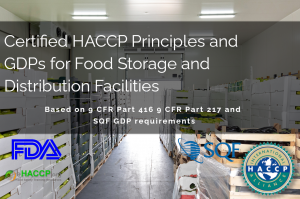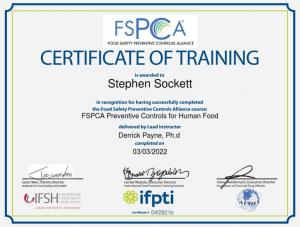Understanding the Differences between HARPC or HACCP
Not sure which certification your facility requires? HACCP and HARPC are often used conversely in food processing circles. Here are the key differences.
HACCP came into existence in the 1960s having been developed by Pillsbury and NASA in order to provide safe food for astronauts on their outer-worldly missions.
HACCP was only implemented as law for meat, poultry, juice, and seafood. In 2011 the FSMA (Food Safety Modernization Act) was signed into existence and required most food manufacturing facilities to have a Qualified Individual and a FSP (Food Safety Plan). In 21 Code of Federal Regulations (CFR) part 117 (part 117), “Current Good Manufacturing Practice, Hazard Analysis, and Risk-Based Preventive Controls for Human Food” was established. The final rule was published the final rule September 17, 2015, and established part 117 in the Federal Register of (80 FR 55908). Part 117 establishes requirements for current good manufacturing practices for human food (CGMPs), for hazard analysis and risk-based preventive controls for human food (PCHF), and related requirements.
Although HACCP and the new HARPC FSP (Food Safety Plan) are very similar there are some fundamental differences.
Hazard Analysis and Critical Control Points (HACCP) is a preventive food safety strategy that is a systematic approach to the identification and assessment of the risk of hazards from a particular food or food production process or practice and the control of those hazards that are reasonably likely to occur.
HACCP systems have been mandated by U.S. Federal regulations issued by the Food and Drug Administration (FDA) for seafood and juice and by the Food Safety and Inspection Service (FSIS) for meat and poultry.
The preventive controls approach to controlling hazards used in an FSP incorporates the use of risk-based HACCP principles in its development. (See the HACCP principles and their application as described by the National Advisory Committee on Microbiological Criteria for Foods.) Although a HARPC FSP and a HACCP plan are similar, they are not identical.
A HACCP Plan requires a HACCP team and a HACCP team leader. A HARPC food safety plan requires a single PCQI (Preventative Control Qualified Individual) trained individual according to 21 CFR 117 .
A HACCP plan requires a process flow diagram. There is no requirement for a process flow diagram in a HARPC food safety plan, however, it is highly recommended that one is available. To that end, it is highly recommended to validate the process flow diagram in your HARPC food safety plan.
In a HACCP plan, the facility is referred to as the facility. In a HARPC food safety plan, the facility in question is referred to as the receiving facility.
A HACCP plan does not have a recall plan but rather has a traceability plan. The FSMA’s requirement in a Food Safety Plan is to have a recall plan in place.
HARPC includes planning for potential terrorist acts or intentional adulteration, food fraud, and a comprehensive recall plan. HACCP does not although HACCP includes intentional adulteration.
These are some of the differences but there are subtle others. To be sure of which certification your facility requires it is best to speak to your auditor. If you are still unable to identify the required certification, please contact Stephen Sockett at (866) 488-1410 to help figure it out.
Stephen Sockett
eHACCP
+1 613-307-8988
email us here
Visit us on social media:
Facebook
LinkedIn
Other
HACCP Training and Certification
Legal Disclaimer:
EIN Presswire provides this news content "as is" without warranty of any kind. We do not accept any responsibility or liability for the accuracy, content, images, videos, licenses, completeness, legality, or reliability of the information contained in this article. If you have any complaints or copyright issues related to this article, kindly contact the author above.



